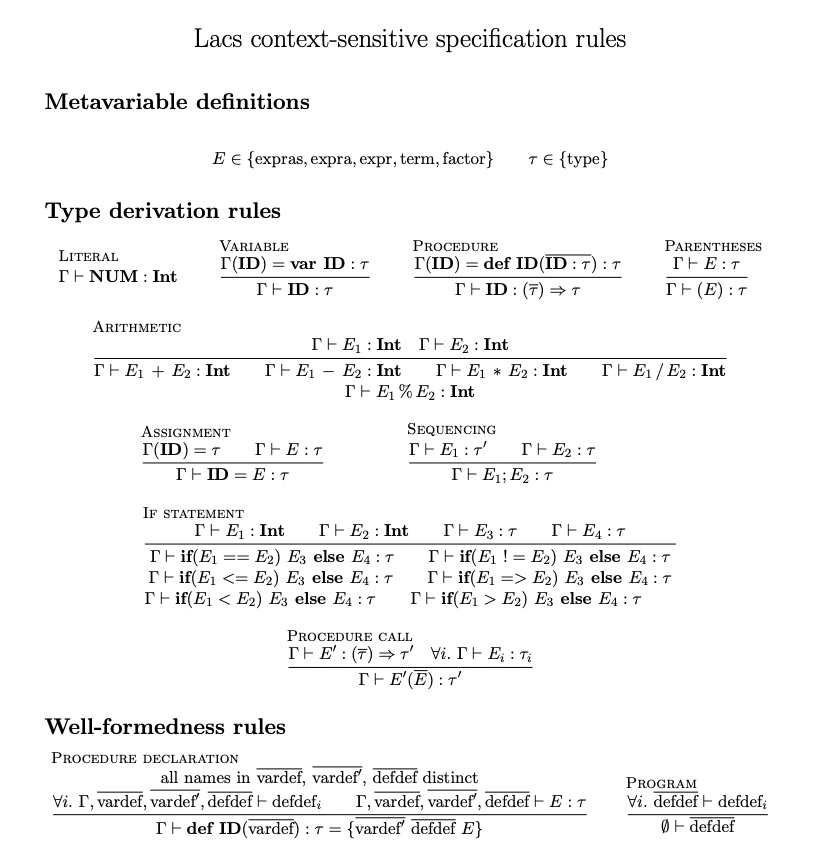Types and Type System
Type
What is a type? Also see Data Type.
Below is information summarized from the following sources (recommended by Teacher):
Summarized in three categorizations:
- A type can be defined as a collection of values, such as integers, characters, strings, programs, trees, sounds, images, videos, etc
- a type is as an interpretation of sequences of bits.
- Ex: 1001 mean the number 9 when interpreted as an unsigned, -7 when interpreted as a two’s-complement integer. You can also interpret the number as ASCII the letter
- A type is a computable property of programs that guarantees some property about their execution
- Ex: if a compiler determines that some expression has the type
Int, then the expression always produces integer values when it is evaluated
- Ex: if a compiler determines that some expression has the type
Type System
A type system is a collection of Inference Rule that define a typing relation. A typing relation is a set of triples , where
- is a typing context in the terminology of type systems and corresponds to a symbol table in our compiler
- In the compiler, a symbol table maps each identifier to its meaning, a declaration of that identifier in the program
- is called a term in the terminology of type systems and corresponds to a subtree of the Parse Tree in our compiler implementation
- is a type
Type Soundness
Wow, see Soundness, it’s exactly the same idea.
We say that a type system is sound if whenever the expression tree has type in the typing relation, then during the execution of a program, the expression evaluates to a value of the type .
For the LACS Language, we have these rules
